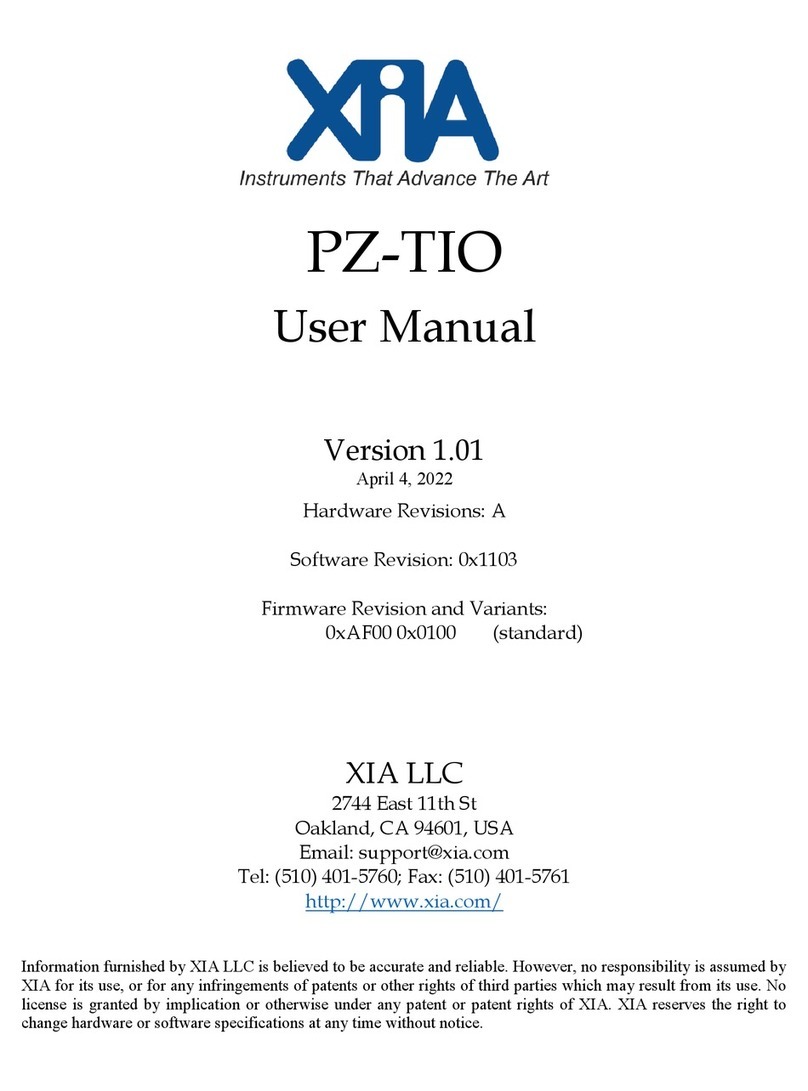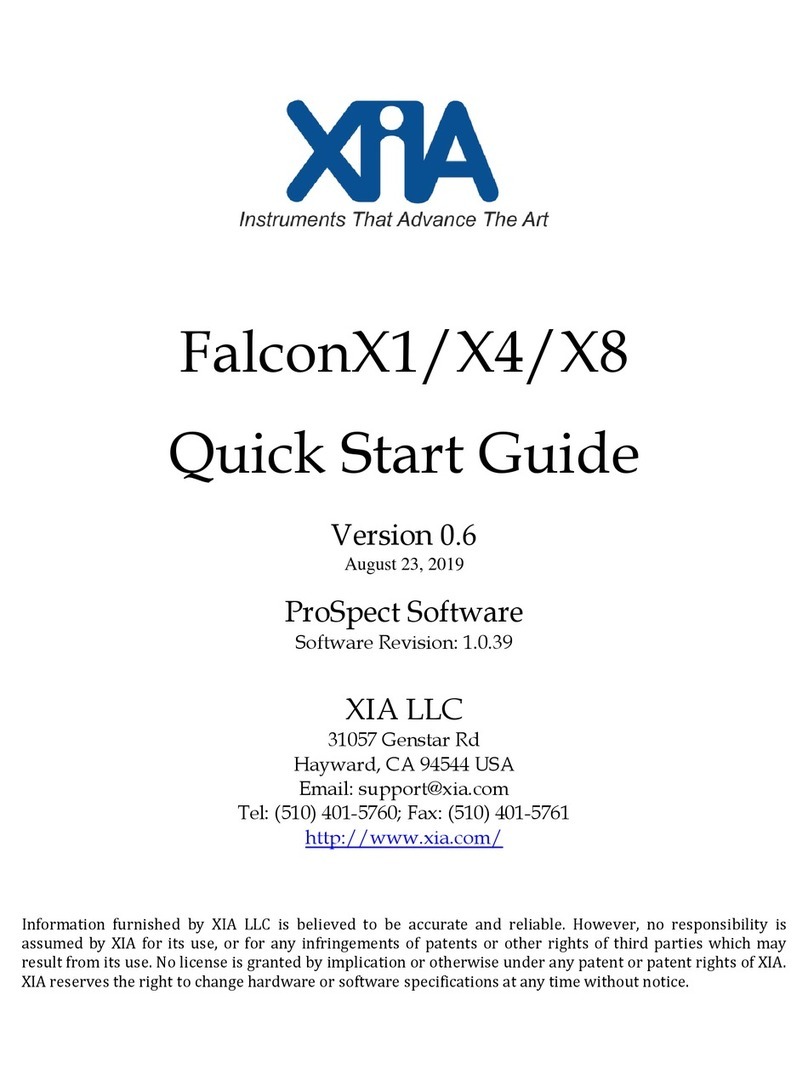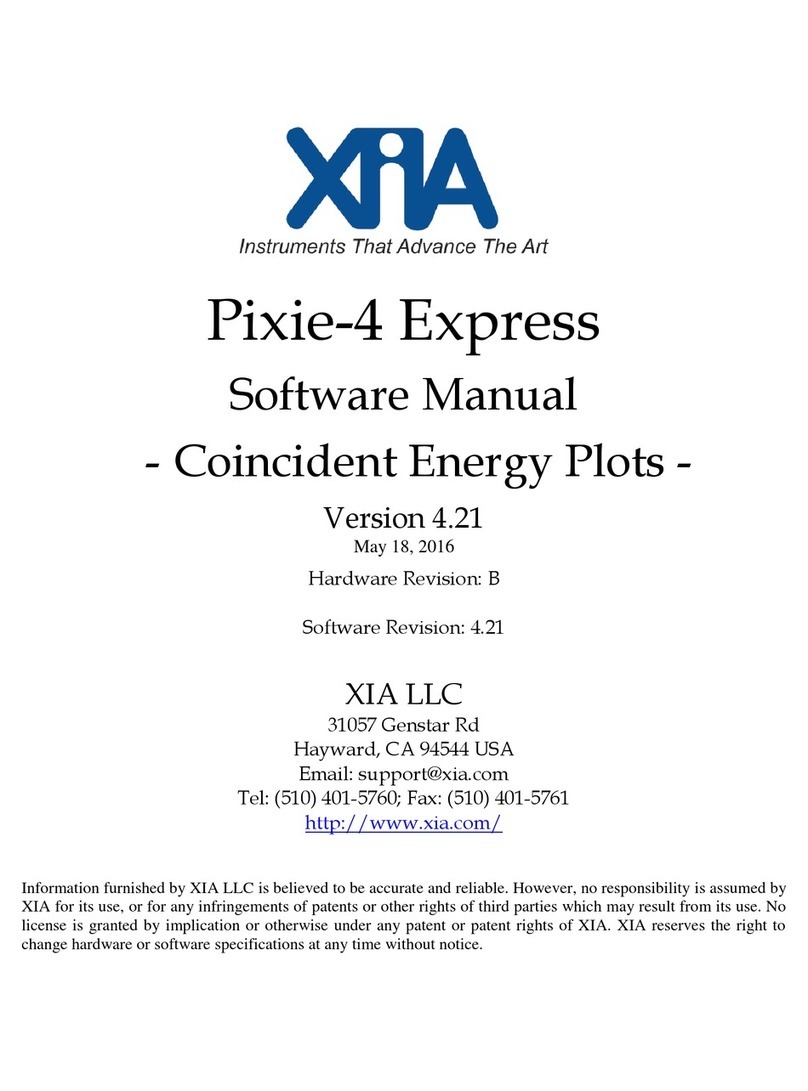
Pixie-16 User Manual August 21, 2018
Version 3.00 www.xia.com 3
2.4.3 Run......................................................................................................................................35
2.4.4 Results.................................................................................................................................36
3Navigating the Pixie-16 User Interface...............................................................................................37
3.1 Overview.....................................................................................................................................37
3.2 Startup.........................................................................................................................................37
3.3 Settings........................................................................................................................................38
3.3.1 Filter....................................................................................................................................39
3.3.2 Analog Signal Conditioning & Acquire ADC Traces.........................................................39
3.3.3 Histogram Control...............................................................................................................40
3.3.4 Decay Time.........................................................................................................................40
3.3.5 Pulse Shape Analysis..........................................................................................................40
3.3.6 Baseline Control & Acquire Baselines ...............................................................................41
3.3.7 Control Registers.................................................................................................................41
3.3.8 CFD Trigger........................................................................................................................45
3.3.8.1 100 MHz and 250 MHz Pixie-16 modules .................................................................45
3.3.8.2 500 MHz Pixie-16 modules ........................................................................................47
3.3.9 Trigger Stretch Lengths ......................................................................................................48
3.3.10 FIFO Delays........................................................................................................................49
3.3.11 Multiplicity .........................................................................................................................51
3.3.11.1 Illustrations of Multiplicity, Coincidence and Group Triggers...................................51
3.3.11.2 Parameters for Configuring Multiplicity, Coincidence and Group Triggers ..............55
3.3.11.3 Local Fast Trigger Gated by External Fast Trigger ....................................................58
3.3.11.4 Channel Validation Triggers.......................................................................................58
3.3.11.5 Module Validation Trigger .........................................................................................61
3.3.11.6 Module Fast Trigger....................................................................................................63
3.3.12 QDC....................................................................................................................................65
3.4 Run..............................................................................................................................................65
3.5 Results.........................................................................................................................................66
4Data Acquisition and Data Structures.................................................................................................70
4.1 Run Types...................................................................................................................................70
4.1.1 MCA Runs ..........................................................................................................................70
4.1.2 List Mode Runs...................................................................................................................70
4.1.3 Summary of Run Types ......................................................................................................70
4.2 Output Data Structures................................................................................................................71
4.2.1 MCA Histogram Data Structure .........................................................................................71
4.2.2 List Mode Data Structures ..................................................................................................71
4.2.3 List Mode Data Values .......................................................................................................74
4.2.3.1 List Mode Time Stamps..............................................................................................74
4.2.3.2 List Mode Energy........................................................................................................75
4.2.3.3 List Mode Trace Length..............................................................................................76
4.2.3.4 List Mode Event Length .............................................................................................76
4.2.3.5 List Mode Energy Sums..............................................................................................76
4.2.3.6 List Mode Baseline .....................................................................................................76
4.2.3.7 List Mode QDC Sums.................................................................................................76
4.2.3.8 List Mode External Clock Timestamps.......................................................................77
4.2.4 Settings Files (Run Statistics Included) ..............................................................................77
4.2.4.1 File Format..................................................................................................................77
4.2.4.2 File Content.................................................................................................................77
5Hardware Description.........................................................................................................................78






























